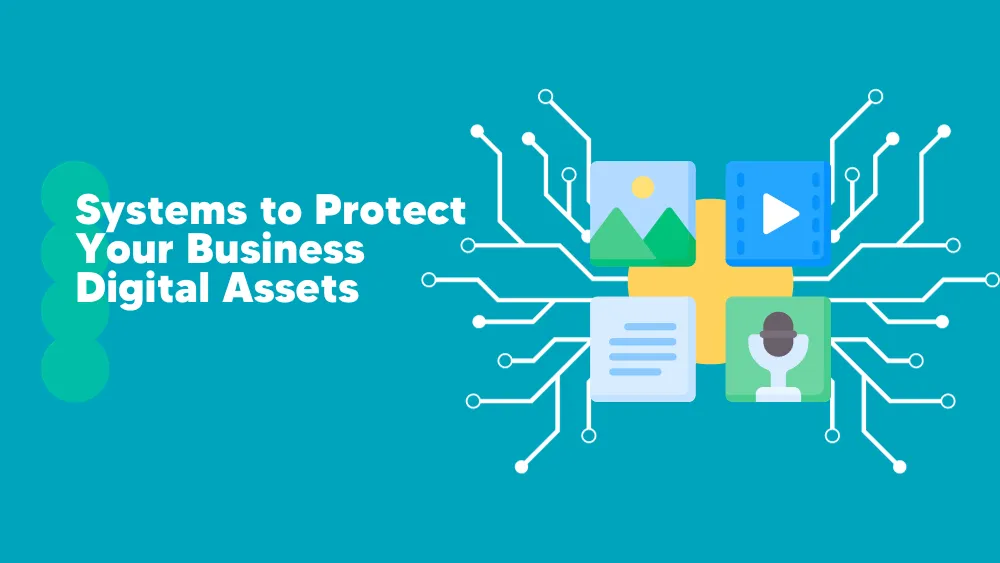
Best Digital Signage Software
What is Digital Signage Software?
Digital Signage Software is a tool that allows you to create, schedule, and distribute multimedia content on electronic displays, such as TVs, monitors, or electronic billboards. The software integrates with specific hardware to ensure that your content is displayed effectively. It offers various content forms, such as text, animation, and videos, which are often intended for public viewing.
These tools are a modern, cost-effective, and interactive alternative to traditional advertising methods, allowing you to promote your brand engagingly. You can design your content once and display it universally, with the added capability of live streaming and managing multiple screens from a single location.
Different types of software are available, including cloud-based, on-premises, open-source, and interactive versions, each catering to different organizational needs and offering unique features.
Using digital signage software has numerous advantages, such as increased audience engagement, flexibility in content updates, cost savings compared to traditional advertising, and enhanced customer experiences.
Overall, digital signage software is a versatile tool used widely across industries to communicate, advertise, and engage with audiences in a contemporary and interactive manner.
Compare Digital Signage Software
Table of Contents
Digital signage software emerges as a fundamental tool reshaping the landscape of visual information dissemination. Digital signage software refers to a robust platform designed to manage, schedule, and display content on electronic screens, transforming traditional static signs into dynamic and interactive displays.
Key purposes across industries
- Retail Revolution – Enhancing customer experience through engaging product displays. Real-time promotions and advertisements for increased sales.
- Corporate Communication – Streamlining internal communication through dynamic displays. Broadcasting announcements, news, and corporate messaging efficiently.
- Education Evolution – Facilitating interactive learning environments. Displaying relevant information and updates across campuses.
- Healthcare Efficiency – Improving patient experience with dynamic waiting room displays. Broadcasting health awareness campaigns and crucial updates.
- Hospitality Enhancement – Elevating guest experiences with digital wayfinding and event information. Showcasing amenities, promotions, and personalized messages.
- Transportation Innovation – Real-time travel information and updates for commuters. Advertising services and generating additional revenue.
Thus, digital signage software serves as a versatile solution, adapting to diverse industries with its ability to convey information dynamically, engage audiences, and transform spaces into immersive communication hubs. As technology advances, the impact and applications of digital signage software continue to evolve, making it an indispensable asset for businesses across various sectors.
How Much Does Digital Signage Software Cost?
Embarking on the digital signage journey involves understanding the diverse pricing models tailored to meet varying business needs. From free entry points to enterprise-level solutions, the cost of digital signage software hinges on factors such as features, scalability, and deployment complexity.
Free Tiers
- Ideal for small businesses or testing the waters.
- Limited features.
- Costs: $0 to $20 per month per display.
Basic and Mid-Tier Plans
- Entry-level plans offering enhanced functionality.
- Suitable for small to medium-sized businesses.
- Costs: $20 to $100 per month per display.
Enterprise-Level Solutions
- Tailored for large-scale deployments with advanced features.
- Comprehensive support and scalability.
- Costs: $100 to $300+ per month per display.
Factors that affect cost
Features and Customization
- Additional costs for advanced customization.
- Range: $50 to $200 per month.
Number of Displays
- Costs increase with additional displays.
- Range: $10 to $50 per month per additional display.
Integration and Compatibility
- Integration with other systems may incur extra costs.
- Range: $20 to $100 per month.
Support and Training
- Premium support packages available.
- Range: $50 to $200 per month.
Cloud-Based vs. On-Premise
- Cloud-based subscriptions: $20 to $150 per month.
- On-premise solutions: One-time licensing fees of $500 to $1,500 per display.
These figures provide a general overview, and businesses are encouraged to seek customized quotes based on their specific requirements. As the digital signage market evolves, staying informed about changing features and pricing structures ensures a tailored and cost-effective solution for your unique digital communication needs.
What Features Should You Look for in Digital Signage Software?
To simplify your journey, here’s a breakdown of essential features that can elevate your digital communication strategy:
Content Scheduling
- Why it Matters: Efficient scheduling ensures your content reaches the right audience at the right time.
- Key Considerations: Look for intuitive scheduling interfaces, support for recurring content, and the ability to schedule different content for various
Screen Management
- Why it Matters: Seamless control over your displays enhances the overall effectiveness of your digital signage.
- Key Considerations: Seek software that allows remote screen management, real-time monitoring, and the ability to organize displays into groups for targeted content delivery.
Interactive Capabilities
- Why it Matters: Interactivity engages your audience and transforms passive viewers into active participants.
- Key Considerations: Prioritize software that supports touch-screen interaction, mobile integration, and interactive content creation tools.
Content Design and Templates
- Why it Matters: A user-friendly content creation process ensures visually appealing and impactful displays.
- Key Considerations: Look for software with drag-and-drop interfaces, a variety of templates, and support for diverse media formats.
Analytics and Reporting
- Why it Matters: Data-driven insights enable you to measure the success of your content and make informed adjustments.
- Key Considerations: Opt for software with analytics dashboards, audience engagement metrics, and reporting tools for performance assessment.
Reliability and Security
- Why it Matters: Uninterrupted operation and data security are paramount for a dependable digital signage solution.
- Key Considerations: Prioritize software with reliable uptime, secure data transmission, and authentication features to safeguard your content.
Integration Capabilities
- Why it Matters: Seamless integration with other tools enhances the overall functionality of your digital signage.
- Key Considerations: Look for software that supports integration with third-party apps, databases, and content management systems.
Benefits of Digital Signage Software
Let’s take a closer look at why digital signage software is such a game-changer:
Dynamic Content Delivery
- Engage Your Audience – Capture attention with dynamic visuals, videos, and real-time updates for a more engaging audience experience.
- Adaptability – Easily modify and update content, ensuring that your messaging remains relevant and impactful.
Increased Brand Visibility
- Branding Opportunities – Utilize digital displays for consistent branding, showcasing logos, colors, and promotional content.
- Targeted Messaging – Tailor content to specific locations, demographics, or times to maximize visibility and impact.
Cost-Effective Communication
- Reduced Printing Costs – Eliminate the need for traditional print materials, reducing printing and distribution expenses.
- Remote Management – Control and update content remotely, minimizing on-site maintenance costs.
Enhanced Customer Experience
- Interactive Elements – Incorporate touch-screen capabilities and interactive content to provide a personalized and engaging experience.
- Real-Time Information – Keep customers informed with up-to-date information on products, services, and promotions.
Analytics for Informed Decisions
- Performance Metrics – Utilize analytics and reporting tools to measure the effectiveness of your content and make data-driven decisions.
- Audience Insights – Gain insights into audience behavior, allowing for targeted content strategies and optimizations.
Scalability for Growth
- Flexibility – Easily expand your digital signage network by adding screens and locations as your business grows.
- Adaptable Solutions – Choose scalable software that evolves with your organization’s changing needs.
Improved Internal Communication
- Efficient Messaging – Streamline internal communication with digital displays for company announcements, updates, and employee engagement.
- Centralized Control – Manage content across multiple locations from a centralized system, ensuring consistent communication.
Time-Sensitive Promotions
- Promotional Agility – Respond quickly to market trends and run time-sensitive promotions with immediate content updates.
- Seasonal Campaigns – Optimize marketing efforts by aligning digital content with seasonal or timely campaigns.
Eco-Friendly Initiatives
- Reduced Environmental Impact – Move towards a paperless environment, contributing to sustainability goals by reducing paper waste.
- Energy Efficiency – Modern displays are energy-efficient, minimizing the environmental footprint compared to traditional printed materials.
Increased Revenue Streams
- Advertising Opportunities – Generate additional revenue by offering advertising space on your digital displays.
- Promotional Partnerships – Collaborate with partners for mutually beneficial promotions, creating new revenue streams.
In essence, digital signage software proves to be a versatile and indispensable tool, offering an array of benefits that extend beyond traditional communication methods.
Who Uses Digital Signage Software?
As we now understand, digital signage software has become a cornerstone in the communication strategies of various industries, revolutionizing the way organizations convey information.
Here’s a closer look at the diverse range of entities harnessing the power of digital signage software:
Retail Businesses
- Storefronts and Chains: Engage customers with dynamic displays showcasing products, promotions, and brand messaging.
- Shopping Malls: Enhance the shopping experience with interactive directories, promotions, and wayfinding displays.
Corporate Offices
- Internal Communication: Utilize digital signage for company-wide announcements, updates, and employee recognition.
- Visitor Welcome Centers: Display corporate information, visitor instructions, and event schedules.
Educational Institutions
- Campus Communication: Disseminate information about events, class schedules, and campus news.
- Interactive Learning: Enhance classrooms with interactive displays for dynamic and engaging lessons.
Healthcare Facilities
- Patient Communication: Keep patients informed with real-time updates, health tips, and appointment information.
- Waiting Areas: Provide entertainment and educational content in waiting rooms for a better patient experience.
Hospitality Industry
- Hotels and Resorts: Welcome guests with digital concierge services, event information, and promotional displays.
- Restaurants: Display menus, promotions, and interactive ordering systems for an enhanced dining experience.
Transportation Hubs
- Airports and Train Stations: Provide real-time travel information, wayfinding, and advertising for passengers.
- Bus Terminals: Display bus schedules, routes, and safety information for commuters.
Entertainment Venues
- Theaters and Concert Halls: Showcase upcoming events, showtimes, and promotional content.
- Stadiums and Arenas: Enhance fan experiences with interactive displays, wayfinding, and event updates.
Financial Institutions
- Bank Branches: Communicate financial updates, promotional offers, and educational content to customers.
- Investment Firms: Display financial market updates, investment tips, and company news.
Government Offices
- Public Buildings: Disseminate important information, community announcements, and civic engagement content.
- Emergency Alerts: Utilize digital signage for emergency notifications and public safety information.
Restaurants and QSRs
- Menu Boards: Streamline menu updates, promotions, and pricing changes with digital displays.
- Ordering Kiosks: Enhance customer convenience with interactive digital ordering systems.
Enhance customer convenience with interactive digital ordering systems.
Digital signage software has become, indeed, a universal tool for communication, catering to diverse sectors with its adaptability, scalability, and ability to transform spaces into interactive communication hubs.
Can Digital Signage Software Be Used for Outdoor Signage?
Well, going way beyond the confines of indoor spaces, digital signage software can indeed be harnessed for outdoor signage, presenting unique challenges and opportunities.
One crucial consideration is weatherproofing, as outdoor displays must withstand varying weather conditions. Robust hardware and enclosures designed to resist moisture, extreme temperatures, and sunlight are paramount for longevity and optimal performance.
Additionally, brightness is a critical factor to combat outdoor ambient light. High-nit displays are essential to ensure visibility in direct sunlight, ensuring that the content remains clear and impactful.
As technology advances, outdoor-specific digital signage solutions equipped with weather-resistant features and high-brightness displays have become pivotal for businesses seeking to extend their messaging to the great outdoors, capturing the attention of passersby and enhancing brand visibility.
How to Ensure Your Digital Signage Content Is Engaging?
Crafting engaging digital signage content goes way beyond the software itself, requiring a thoughtful approach to captivate audiences effectively.
Here’s some useful tips:
- Begin by understanding your target audience and tailoring content to resonate with their preferences and interests. Incorporate dynamic elements such as eye-catching visuals, animations, and videos to add a layer of excitement to your displays.
- Utilize motion to draw attention and convey information in a visually compelling manner.
- Leveraging user interaction is another key strategy; incorporate touch-screen capabilities or interactive elements to transform passive viewers into active participants!
- Regularly refresh and update content to keep it relevant and avoid viewer fatigue.
By combining strategic content planning with the features offered by digital signage software, businesses can now ensure that their displays not only convey information effectively but also create a memorable and engaging experience for their audience.
Challenges of Implementing Digital Signage Software
We have seen its numerous advantages but implementing digital signage software also brings forth challenges, notably in hardware compatibility and network issues. The seamless integration of diverse displays and devices requires thorough research on hardware requirements.
Choosing software with broad hardware support can help alleviate compatibility concerns. Network issues, such as bandwidth limitations, create several problems with real-time content updates. Mitigating this challenge involves strategic content delivery scheduling, considering network constraints.
Investing in stable and scalable network infrastructure, along with regular monitoring, addresses potential issues promptly, enhancing the overall reliability of the digital signage system.
Overcoming these challenges ensures a smooth implementation, allowing businesses to leverage the full potential of digital signage for effective communication.
How Does Digital Signage Software Integrate with Other Systems?
Let’s finish this journey with a glimpse into the seamless integration capabilities of digital signage software, connecting your communication strategy with various systems for a comprehensive and cohesive approach.
Digital signage software, in fact, plays well with Content Management Systems (CMS), enabling effortless content updates and synchronization across multiple displays. This integration ensures that your messaging remains consistent and up-to-date, all managed from a centralized platform.
Moreover, the synergy extends to social media integration, allowing real-time display of social media feeds, posts, and engagement metrics. This dynamic connection enhances audience interaction and keeps your displays fresh with the latest social content.
Additionally, digital signage software can tap into real-time data sources, providing live updates on metrics, news, and relevant information. This integration not only enriches your content but also adds a layer of relevance, making your displays more impactful and responsive to the ever-changing business landscape.
The interoperability of digital signage software with CMS, social media, and real-time data sources amplifies its effectiveness and incredible power, creating a harmonious and dynamic communication ecosystem. This integration ensures that your digital signage not only communicates but actively engages, keeping your audience informed and captivated in real-time.






















